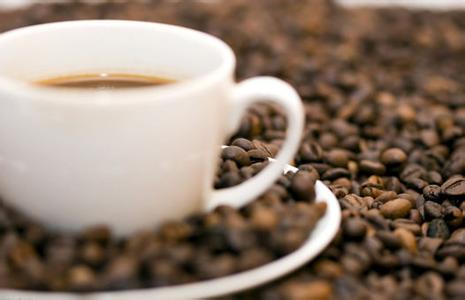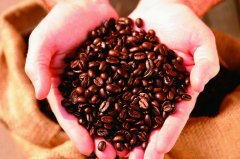What is Arabica coffee based on boutique coffee?

In many places where coffee is sold, it is not difficult to find words like "100% Arabica", and even canned coffee has a style called (Arabica coffee), which makes one wonder: What is "Arabica coffee"?
In fact, Arabica is the name of the coffee tree species.
Arabica and Robusta are two distinct coffee varieties that currently account for the majority of coffee bean production worldwide. There are three main differences between Arabica and Robusta coffees: 1. 2. Flavors vary. 3. Difference between market value and use. Differences in planting conditions
Arabica coffee is grown under harsher conditions, requiring higher altitudes (600 to 2000 metres above sea level), fertile soil, adequate moisture, adequate sunlight and shade. Arabica coffee trees are less resistant to pests and diseases and are vulnerable to damage. In addition, the annual yield of coffee trees per unit area is also low. Arabica coffee currently accounts for 75% of the world's coffee production, and only 10% of this Arabica coffee production can be classified as "specialty coffee". Robusta coffee, commonly known as "robust beans", can be grown at low altitudes (200 to 800 meters above sea level), is resistant to pests and diseases, is not susceptible to agricultural damage, has a high annual yield per unit area of coffee trees, is harvested by machines, and generally, the production cost is much lower than Arabica coffee.
Different flavor characteristics
"Arabica" coffee has a variety and a wide range of potential flavors. Arabica coffee produced in different regions, at different altitudes and in different climates usually has its own characteristics and can show very different personality flavors. "Arabica" coffee smells like grass when it is not roasted, and when properly roasted, it shows "fruity"(medium light roast) and "caramel sweet"(deep roast), generally with better aroma and flavor than Robusta beans. Robusta coffee generally has a bland, dull, pungent flavor, and because most of the world's Robusta coffee is grown at low altitudes (India already has a small number of high-altitude, high-quality, water-washed Robusta coffee beans, which cost more than most Arabica coffee beans), there is not much difference in flavor between different regions and different climates, and there is a lack of personality. When unroasted, it smells like raw peanuts. Cheap Robusta coffee beans usually exhibit a taste between "wheat tea flavor"(medium light/roasted) and "rubber tire flavor"(dark roasted) after roasting, which is difficult to show detailed flavor.
Difference between market price and use
Fine Arabica coffee requires a complex process of hand picking, selection and careful processing, so the most expensive and best coffee beans in the world are Arabica coffee. Robusta coffee is usually used to make instant coffee and canned coffee because of its low cost. A few of the better quality "Robusta" coffees are also used in blending (with Arabica) espresso beans.
Other differences include an important difference in caffeine content: Robusta coffee has about twice as much caffeine as Arabica coffee, which is why drinking certain canned coffees can cause palpitations and insomnia.
After reading so much about the difference between Arabica coffee and Robusta coffee, I must finally emphasize:
"Arabica coffee" is not "good coffee" and "Robusta" is not cheap coffee!
Arabica coffee accounts for 75% of the world's coffee production, and its quality varies greatly, with good and bad. In recent years, a few countries, such as India, have made efforts to improve the quality of Robusta coffee. They have planted Robusta at high altitudes, subjected it to the most careful care, and carefully washed it, resulting in very excellent quality Robusta coffee beans! Top Robusta beans are not cheap either, get rid of the old impression that Robusta is all cheap beans! Therefore, the quality of coffee beans can no longer be judged by the crude and outdated ancient standard of "Arabica beans."
Important Notice :
前街咖啡 FrontStreet Coffee has moved to new addredd:
FrontStreet Coffee Address: 315,Donghua East Road,GuangZhou
Tel:020 38364473
- Prev

Basic knowledge of coffee about the sour taste of coffee (acidity)
1. Arabica has high acidity, while Robusta has low acidity. The acidity of washed beans is high while that of sun-dried beans is low. The acidity of light baking is high and that of deep baking is low. High acidity does not mean bright and low does not mean dull; 5. The acidity of fast baking is relatively bright, but improper grasp will lead to acidity; slow baking acidity is relatively soft, but improper grasp will lead to dull; 6. Made with high water temperature and relatively bright acidity
- Next

Basic knowledge of high-quality coffee summary of coffee vocabulary
We will explain several adjectives or nouns. I would like to remind you that these words are neutral and have no value judgment. ● texture, Body,Mouthfeel texture refers to the thick and slippery touch of coffee in the mouth, which is proportional to the amount of colloid suspension in the coffee. Since the texture is felt throughout the mouth, we use "rich" to describe thick coffee.
Related
- Beginners will see the "Coffee pull flower" guide!
- What is the difference between ice blog purified milk and ordinary milk coffee?
- Why is the Philippines the largest producer of crops in Liberia?
- For coffee extraction, should the fine powder be retained?
- How does extracted espresso fill pressed powder? How much strength does it take to press the powder?
- How to make jasmine cold extract coffee? Is the jasmine + latte good?
- Will this little toy really make the coffee taste better? How does Lily Drip affect coffee extraction?
- Will the action of slapping the filter cup also affect coffee extraction?
- What's the difference between powder-to-water ratio and powder-to-liquid ratio?
- What is the Ethiopian local species? What does it have to do with Heirloom native species?

